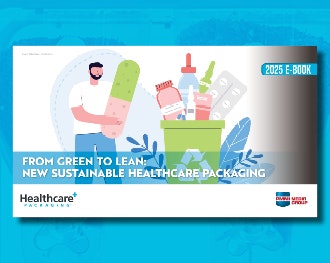• minimizes the need for operator training and helps eliminate programming errors
• meets coding needs of manufacturers that export products to countries requiring printed graphic characters
Markem Corp.
High-altitude transportation of goods has created unique problems in maintaining the integrity of the packaging. Ground transportation through higher elevations and air transportation via cargo and feeder aircraft with either partial or no pressurization results in a high incidence of reports of packaging failure. Packages sealed at or near sea level will experience an increased pressure differential on the seal/closure/finish with exposure to higher elevations. This pressure differential can cause leaks. For the past four years, Michigan State University's School of Packaging has been involved in studies to determine the effects of simultaneous vibration and low pressure on package integrity. These projects, funded by the Federal Aviation Administration and conducted by the Consortium of Distribution Packaging Research, aim to identify problems with existing packages and develop new test methods that can reduce the number of leaks in air shipments. Among the test results were the following: • Wide-mouth samples (>28-mm) leaked more than narrow-mouth ones. • HDPE bottles leaked more than glass bottles: 30.3% vs 20.6%, respectively. • The average failure rate (leaks) for the entire study was 25.4%. • Closure back-off was not observed in any of the leakers. This was verified by putting aligned ink marks on the cap and bottle, then testing for misalignment. • Higher failure rates for the HDPE samples can be attributed to several effects: larger tolerances in finish specifications for plastic bottles and closures as compared to glass bottles and phenolic closures; the effect of temperature and creep; and that plastic bottles tend to "panel" (buckle inward) when the headspace air escapes, taking product with it. • The overall failure rate for a liner made from a PE foam core between two PE sheet layers was 91 leakers out of 270 samples tested, or 33.7%; 22.2% for PVC liners. A larger percentage of PVC liners with paperboard backing showed swelling and delamination during the test, resulting in package failure and leaks. The overall failure for linerless closures was 20% of the 270 samples tested. • Recommended application torques on closures, consistent with industry practice, do not prevent leaks. • Leaks were observed in samples that retained a residual removal torque after the test, so the closures retained some tightness.

